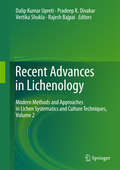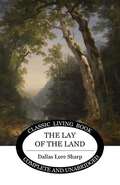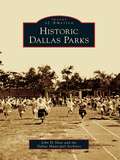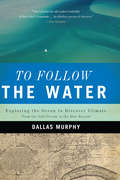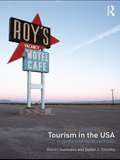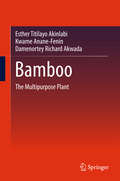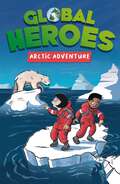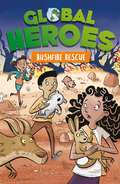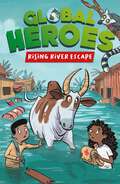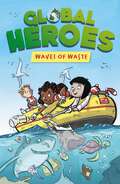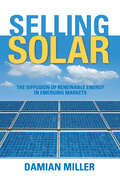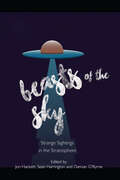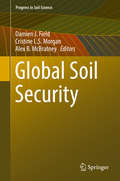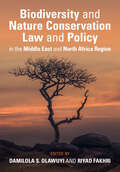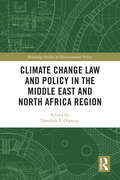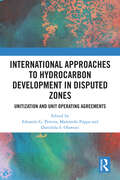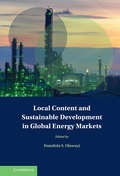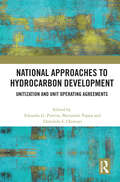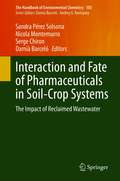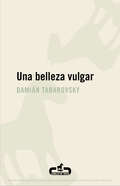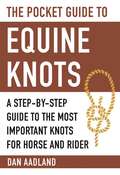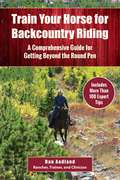- Table View
- List View
Recent Advances in Lichenology
by Dalip Kumar Upreti Pradeep K. Divakar Vertika Shukla Rajesh BajpaiThis book discusses in detail molecular, mycobiont culture, biomonitoring and bioprospection of lichens, providing insights into advances in different fields of lichenology by applying modern techniques and approaches and examining how their application has enhanced or changed classical approaches. It offers a valuable resource, especially for beginners, students and researchers from different academic backgrounds interested in the study of lichens. In recent years, the introduction of modern analytical techniques and approaches has significantly improved our understanding of the environment, including lichens. Lichens are unique organisms which possess untapped potential as effective and reliable bioindicators, sources of therapeutic phytochemicals, and as excellent extremophiles. The unique and peculiar characteristics of lichens underline the need for a multidimensional approach to explore their potential in various fields of environment science, botany and chemistry. Modern techniques, especially molecular techniques, have greatly enriched the field of lichen taxonomy and its position in the plant kingdom, revealing little-known species and exploring their evolutionary history, while multivariate analysis and GIS approaches have established lichens as an ideal and reliable tool for monitoring air pollution. Advanced culture techniques have expanded the pharmacological applications of lichens, which was formerly restricted due to their small biomass. The advent of sophisticated analytical instrumentation has now facilitated the isolation and characterization of lichens' bioactive constituents, even in lower concentrations, as well as the estimation of their stress responses at different levels of pollution. As lichen diversity is adversely affected by increasing air pollution, there is a pressing need to develop effective management practices to conserve, restore and document lichen diversity.
The Lay of the Land
by Dallas Lore Sharp R. Bruce HorsfallThe Lay of the Land features fifteen nature sketches written from Sharp’s personal observations of the land and its inhabitants over a number of years. Subjects include muskrats preparing a home, Christmas in the woods, buzzards nesting and much more. The title chapter urges the reader to spend time observing nature for themselves. <p><p>“Nature study is the out-of-door side of natural history, the unmeasured, unprinted side of poetry. It is joy in breathing the air of the fields; joy in seeing, hearing, living the life of the fields; joy in knowing and loving all that lives with you in your out-of-doors.” - Dallas Lore Sharp <p><p>This edition is complete and unabridged and features all of the illustrations from the 1922 printing to provide the best possible reading experience.
Historic Dallas Parks
by Dallas Municipal Archives John H. SlateDallas, called "Big D," is the eighth largest city in the United States and rests on 343 square miles of rolling prairie. To meet the growing recreational and cultural needs of its citizens, the Dallas Park and Recreation Department maintains more than 23,018 park acres--one of the largest municipal park systems in the country. Dallas has over 400 individual parks, including community centers, swimming pools, athletic fields, and a metropolitan zoo. From such well-known places as Fair Park, home of the State Fair of Texas and the Texas Centennial Exposition of 1936, to Dealey Plaza, and to lesser-known neighborhood parks, Dallas parks have a rich history stretching from the days when Dallas was a western boom town to a 21st century metropolis. Historic Dallas Parks explores the origins and early development of this nationally recognized system with interesting background stories and facts and illustrated with photographs and historical documents from the collections of the Dallas Municipal Archives.
To Follow the Water: Exploring the Ocean to Discover Climate
by Dallas MurphyThe always entertaining novelist, essayist, and travel writer, Dallas Murphy blends history, travel, and adventure in this exploration of the worldOCOs most important waterway"
Tourism in the USA: A Spatial and Social Synthesis
by Dimitri Ioannides Dallen TimothyThe United States continues to provide opportunities for travel and tourism to domestic and international travellers. This is the first book to offer students a comprehensive overview of both tourism and travel in this region, paying specific attention to the disciplines of Geography, Tourism Studies and, more generally, Social Science. Tourism in the USA explains the evolution of tourism paying attention to the forces that shaped the product that exists today. The focus of the book includes the manner in which tourism has played out in various contexts; the role of federal, state, and local policy is also examined in terms of the effects it has had on the US travel industry and on destinations. The various elements of tourism demand and supply are discussed and the influence that transportation (especially Americans’ high personal mobility rates and love affair with the auto) has had on the sector highlighted. The economics of tourism are fleshed out before focusing more narrowly on both the urban and rural settings where tourism occurs. A look into the manner in which the spatial structure of cities is transformed through tourism is also offered. Additionally, a brief examination of future issues in American tourism is presented along with explanations concerning the ascendancy of tourism as an economic development tool in various areas. The book combines theory and practice as well as integrating a range of useful student orientated resources to aid understanding and spur further debate, which can be used for independent study or in class exercises. These include: ‘Closer Look’ case studies with reflective questions to help show theory in practice and encourage critical thinking about tourism developments in this region ‘Discussion Questions’ at the end of each chapter encourage stimulating debates ‘Further Reading’ sections direct the readers to related book and web resources so that they can learn more about the topics covered in each chapter. Written in an engaging style and supported with visual aids, this book will provide students globally with an in-depth and essential understanding of the complexities of tourism and travel in the USA.
Cambridge Studies in International and Comparative Law: International Law and Governance of Natural Resources in Conflict and Post-Conflict Situations
by Dam-de Jong, DaniëllaNatural resource wealth is conducive to a country's development. Nevertheless, the last few decades have shown a harsher reality, where natural resources have also triggered, financed or fuelled a number of internal armed conflicts. Examples include the armed conflicts in Cambodia, Sierra Leone, Liberia and the Democratic Republic of the Congo, which have been financed with the exploitation of a variety of valuable natural resources, including diamonds, gold, timber, oil and cocoa. The aim of this book is to assess the contribution of international law in ensuring that natural resources are used to promote development and to achieve sustainable peace instead of financing armed conflict. For this purpose, the author discusses the international legal framework for the governance of natural resources in States in general, in situations of armed conflict and as part of conflict resolution and post-conflict peacebuilding efforts.
Bamboo: The Multipurpose Plant
by Esther Titilayo Akinlabi Kwame Anane-Fenin Damenortey Richard AkwadaThis book is intended for use both in the industry and the academia. It introduces the physical, chemical and the mechanical properties as well as the characterization of bamboo. Novel industrial applications in structural, non-structural, reinforcement, afforestation, land reclamation, environmental significance, textile, medical, geotechnical, hydraulic, food, pulp and the paper industries are addressed in detail. Bamboo has been used for centuries as a structural material as well as in diverse engineering applications, food and medicinal purposes, especially in Asia. As a natural fiber composite, bamboo has the potential for many developments in academic and industrial research. Current literature on composites tends to focus on bamboo as a plant or solely as a structural engineering material. This book seeks to bring together these two extremes and provides a holistic resource on the subject.
Arctic Adventure (Global Heroes #4)
by Damian HarveyJoin our team of Global Heroes in this fast-paced, science-themed chapter book set in the abominably cold arctic!Great for readers age 7+ these adventure stories are also full of fascinating facts. These illustrated chapter books are perfect for making fascinating science topics accessible to young readers, inspiring a thirst for knowledge and learning by stealth. The team of characters come from around the world to give a truly global outlook.
Bushfire Rescue (Global Heroes #2)
by Damian HarveyJoin our team of Global Heroes in this fast-paced, science-themed chapter book as they undertake a daring rescue mission to save wildlife trapped by burning bushfires in the Australian outback...Great for readers age 7+ these adventure stories are also full of fascinating facts. In Bushfire Rescue our heroes discover what conditions lead to sudden forest fires, what is causing the planet to hot up and how they can help stop the fires from raging. These illustrated chapter books are perfect for making fascinating science topics accessible to young readers, inspiring a thirst for knowledge and learning by stealth. The team of characters come from around the world to give a truly global outlook.
Rising River Escape (Global Heroes #3)
by Damian HarveyJoin our team of Global Heroes in this fast-paced, science-themed chapter book as they rush to rescue wildlife from the rapidly rising flood waters in Madagascar .Great for readers age 7+ these adventure stories are also full of fascinating facts. In Rising River Escape our heroes face a challenge to locate and rescue any remaining wildlife from a flooded village, while also uncovering an illegal trade in lemurs. They discover the causes and effects of rising sea levels, its impact on countries like Madagascar and what can be done to help prevent and protect from this threat in the future.These illustrated chapter books are perfect for making fascinating science topics accessible to young readers, inspiring a thirst for knowledge and learning by stealth. The team of characters come from around the world to give a truly global outlook.
Waves of Waste (Global Heroes #1)
by Damian HarveyJoin our team of Global Heroes in this fast-paced, science-themed chapter book as they aim to rid the seas of the rising pollution and waste, but must also navigate deadly dangers from sea predators... Great for readers age 7+ these adventure stories are also full of fascinating facts. These illustrated chapter books are perfect for making fascinating science topics accessible to young readers, inspiring a thirst for knowledge and learning by stealth. The team of characters come from around the world to give a truly global outlook.
Selling Solar: The Diffusion of Renewable Energy in Emerging Markets
by Damian MillerTo solve the climate crisis, the world must make a wholesale shift to renewable energy technologies. With surging growth in emerging markets, this transformation takes on even greater urgency. The challenges - and opportunities - are immense. Selling Solar considers how such a shift might happen. Focusing on the case of solar photovoltaics, it shows how, at the start of the 21st century, this promising technology began to diffuse rapidly in select emerging markets, after years of struggling to take off. What were the initial barriers to diffusion? How were they overcome? Who did it? And how can this success be replicated? Drawing on literature on innovation diffusion and entrepreneurship, the author answers these questions, showing how entrepreneurs affected profound technological change not just through the solar systems they sold, but through the example they set to both new market entrants and policymakers. In analysing how this happened, this book offers important lessons for the diffusion of a range of renewable energy technologies in emerging markets, and for the advancement of the sector as a whole. Selling Solar is essential reading for anyone who believes in a renewable energy future and wants it sooner rather than later.
Beasts of the Sky: Strange Sightings in the Stratosphere
by Jon Hackett Seán Harrington Damian O'ByrneOften the sky is conceptualised as a place of infinite possibilities, past the limits of our scientific explorations – and into the realms of our fiction and speculation; it is the site for our thoughts on the future, of the extra-terrestrial and beyond. Our representations in the media of space, sky and the infinite invariably mediate social and cultural anxieties that are current, looming and indeed threatening. These concerns range from the environment and fears of ecosystem collapse; the nuclear arms and space race; modernity, utopia and dystopia.Beasts of the Sky: Strange Sightings from the Stratosphere is the third and final collection in the Beasts series. This collection offers its readers an in-depth and interdisciplinary engagement with the skies above and their monstrous inhabitants, through critical readings of science fiction and popular culture – through the media of film, television, popular music, digital games and animation.Within this collection there are a multitude of convergent critical perspectives used to engage and explore fictional and real monstrosities of the sky and space in media. As with previous collections, Skies features chapters from a variety of academic perspectives; genre and narrative, textual analysis, spectatorship and reception, Tolkien studies, performance studies, digital media and indeed fiction are featured. Under examination are a wide range of narratives and media forms that represent, reimagine and create subjects as varied as the threat of nuclear weapons, sightings of UFOs, space exploration and flying creatures.
Global Soil Security (Progress in Soil Science)
by Damien J. Field, Cristine L. S. Morgan and Alex B. McBratneyThis book introduces the concept of soil security and its five dimensions: Capability, Capital, Condition, Connectivity and Codification. These five dimensions make it possible to understand soil's role in delivering ecosystem services and to quantify soil resource by measuring, mapping, modeling and managing it. Each dimension refers to a specific aspect: contribution to global challenges (Capability), value of the soil (Capital), current state of the soil (Condition), how people are connected to the soil (Connectivity) and development of good policy (Codification). This book considers soil security as an integral part of meeting the ongoing challenge to maintain human health and secure our planet's sustainability. The concept of soil security helps to achieve the need to maintain and improve the world’s soil for the purpose of producing food, fiber and freshwater, and contributing to energy and climate sustainability. At the same time it helps to maintain biodiversity and protects ecosystem goods and services.
Biodiversity and Nature Conservation Law and Policy in the Middle East and North Africa Region
by Damilola S. Olawuyi Riyad FakhriThis book offers a comprehensive and authoritative account of the guiding principles and rules relating to biodiversity, nature conservation, and the protection of cultural heritage in the MENA region. The book introduces readers to the applicable legislation, institutions and rules underpinning the design, approval, financing and implementation of biodiversity and nature-based solutions across the MENA region. It also explores larger questions on legal and institutional frameworks that can help address broader issues of fragmentation, gender inequality, inadequate stakeholder engagement, lack of transparency, limited access to environmental information, and lack of comprehensive domestic legislation, all of which stifle the integrated implementation of biodiversity and nature conservation treaties and the equitable sharing of the benefits derived from biodiversity and nature in the region. Written in a user-friendly style, the book closes with recommendations and reflections on legal and regulatory innovations for advancing biodiversity and nature-based solutions in the MENA region. This title is also available as open access on Cambridge Core.
Climate Change Law and Policy in the Middle East and North Africa Region (Routledge Studies in Environmental Policy)
by Damilola S. OlawuyiClimate Change Law and Policy in the Middle East and North Africa Region provides an in-depth and authoritative examination of the guiding principles of climate change law and policy in the MENA region. This volume introduces readers to the latest developments in the regulation of climate change across the region, including the applicable legislation, institutions, and key legal innovations in climate change financing, infrastructure development, and education. It outlines participatory and bottom-up legal strategies—focusing on transparency, accountability, gender justice, and other human rights safeguards—needed to achieve greater coherence and coordination in the design, approval, financing, and implementation of climate response projects across the region. With contributions from a range of experts in the field, the collection reflects on how MENA countries can advance existing national strategies around climate change, green economy, and low carbon futures through clear and comprehensive legislation. Taking an international and comparative approach, this book will be of great interest to students, scholars, and practitioners who work in the areas of climate change, environmental law and policy, and sustainable development, particularly in relation to the MENA region.
International Approaches to Hydrocarbon Development in Disputed Zones: Unitization and Unit Operating Agreements
by Damilola S. Olawuyi Eduardo G. Pereira Marianthi PappaThis book analyses the legal obstacles associated with the advancement of unitization processes and procedures at an international level.Using case studies in international (cross-border) unitization and joint development agreements, the book uses regional examples from the Americas, Europe, Africa and the Middle East. It also touches upon case studies related to ongoing disputes from the South China Sea, Mediterranean Sea and Gulf of Guinea. Focusing on best practices which have influenced the development of the unitization concept, the book looks at the formulation of different models and agreements, and their potential impact on unexplored hydrocarbon resources, particularly in cases where unitization is necessary.The book will be of interest to practitioners, scholars and students in the field of natural resource law, international law and unitization.
Local Content and Sustainable Development in Global Energy Markets (Treaty Implementation for Sustainable Development)
by Damilola S. OlawuyiLocal Content and Sustainable Development in Global Energy Markets analyses the topical and contentious issue of the critical intersections between local content requirements (LCRs) and the implementation of sustainable development treaties in global energy markets including Africa, Asia, Europe, North America, Latin America, South America, Australasia and the Middle East While LCRs generally aim to boost domestic value creation and economic growth, inappropriately designed LCRs could produce negative social, human rights and environmental outcomes, and a misalignment of a country's fiscal policies and global sustainable development goals. These unintended outcomes may ultimately serve as disincentive to foreign participation in a country's energy market. This book outlines the guiding principles of a sustainable and rights-based approach – focusing on transparency, accountability, gender justice and other human rights issues – to the design, application and implementation of LCRs in global energy markets to avoid misalignments.
National Approaches to Hydrocarbon Development: Unitization and Unit Operating Agreements
by Damilola S. Olawuyi Eduardo G. Pereira Marianthi PappaThis book analyses the legal obstacles associated with the advancement of unitization processes and procedures at a national, domestic level.It uses case studies of identified jurisdictions with relevant States practice and unitization experience in terms of the domestic legal framework and practices. For experience in unitization, the book will focus on the following countries: the United States, Canada, the United Kingdom, Norway, Brazil, Mexico, Ghana and Nigeria. Focusing on best practices which have influenced the development of the unitization concept, the book looks at the formulation of different models and operating agreements, and their potential impact on unexplored hydrocarbon resources, particularly in cases where unitization is necessary.The book will be of interest to practitioners, scholars and students in the field of natural resource law, international law and unitization.
The Palgrave Handbook of Natural Gas and Global Energy Transitions
by Damilola S. Olawuyi Eduardo G. PereiraThe Palgrave Handbook of Natural Gas and Global Energy Transitions provides an in-depth and authoritative examination of the transformative implications of the ongoing global energy transitions for natural gas markets across the world.With case studies from Africa, Asia, Europe, North America, Latin America, South America, Australia, and the Middle East, the volume introduces readers to the latest legal, policy, technological, and fiscal innovations in natural gas markets in response to ongoing global energy transitions. It outlines the risk mitigation strategies and contractual techniques — focusing on resilience planning, low-carbon business models, green procurement, climate-smart infrastructure development, accountability, gender justice, and other sustainability safeguards — that are required to maximize the full value of natural gas as a catalyst for a just and equitable energy transition and for energy security across the world.Written in an accessible style, this book outlines the guiding principles for a responsible and low-carbon approach to the design, financing, and implementation of natural gas development and commercialization. It is an indispensable text and reference work for students, scholars, practitioners, and stakeholders in natural gas, energy, infrastructure, and environmental investments and projects.
Interaction and Fate of Pharmaceuticals in Soil-Crop Systems: The Impact of Reclaimed Wastewater (The Handbook of Environmental Chemistry #103)
by Damià Barceló Sandra Pérez Solsona Nicola Montemurro Serge ChironThis book provides a comprehensive overview of the current knowledge on the fate and interaction of pharmaceuticals in soil-crop systems. It addresses the principles of their transport, uptake and metabolism and reviews methodologies for their analytical determination. It also discusses ecotoxicological effects arising from their presence and highlights bioremediation approaches for their removal. The use of treated wastewater to irrigate crops is becoming more widespread in regions where freshwater is limited. This practice conserves freshwater resources and contributes to nutrient recycling. However, concerns remain regarding the safety of irrigation with treated wastewater since it contains residues of pharmaceuticals that have survived treatment, which means that soil and fauna are potentially exposed to these xenobiotics. Various pathways govern the fate of pharmaceuticals in crop-soil systems, including soil degradation; formation of non-extractable residues; uptake by soil-dwelling organisms (e.g. earthworms); and uptake, transport, and metabolism in agricultural crops. Investigations into these aspects have only recently been initiated, and there is still a long way to go before a meaningful assessment of the impact of wastewater has been completed.
Una belleza vuglar
by Damián TabarovskyUna hoja se desprende de un árbol en una calle concreta de Buenos Aires. Mientras cae y como si la hoja funcionase como un espejo de almas y cuerpos, la narración da cuenta de los habitantes de un edificio: sus expectativas, su realidad, sus sueños, sus deseos... hasta componer un retrato poliédrico de las formas de vida de nuestro tiempo. La narración se presenta así como un intento de gran originalidad que busca atrapar «esa belleza que todavía no ha llegado al mundo», que flota sobre nosotros y que en pocas ocasiones nos atrevemos a reconocer.«Hay que defender esta literatura, y la de Damián Tabarovsky lo es en grado sumo, si queremos evitar que los aduladores de la vacuidad acampen a su antojo.»Ernesto Ayala, Babelia
The Pocket Guide to Equine Knots: A Step-by-Step Guide to the Most Important Knots for Horse and Rider (Skyhorse Pocket Guides)
by Dan AadlandAs anyone who has ever stepped foot into a barn knows well, riding, handling, and caring for a horse is no easy task. Learning how to correctly tie knots can make things easier, but with more than four thousand different types of knots out there, the choices can be overwhelming. Experienced trainer and breeder Dan Aadland is here to help with The Pocket Guide to Equine Knots, a compact guidebook filled with only the most useful and practical knots for dealing with horses. Here, you’ll learn to recognize a “good” knot—a knot that holds but can be untied after pressure. You’ll look into the world of hitches (systems for packing items onto a horse) and splices (useful ways of joining ropes and creating loops). And you’ll learn step-by-step how to properly tie dozens of different knots, including:Square knotBowknotHitchAnd many moreSo whether you’re an experienced rider or you’re about to head out on the trail for the first time, The Pocket Guide to Equine Knots is guaranteed to help you as you ride off towards your next adventure.
Train Your Horse for the Backcountry: A Comprehensive Guide for Getting Beyond the Round Pen
by Dan AadlandMany clinicians offer strong instruction in building a relationship with the horse but too often exclude safety concerns and teaching the skills necessary for safe and fulfilling use in the backcountry. They don?t show students how to tie up a horse?s foot should you have to restrain him to pull porcupine quills, and they don?t teach basic knots and hitches. Enter Dan Aadland, a seasoned equestrian and breeder who shares expertise gained from riding backroads and teaching clinics. Aadland first teaches students to understand the natural impulses of the horse and how to stay safe, a method he calls ?survival horsemanship.? He then moves on to training both horse and rider in the basics of trail riding, including saddling, mounting with control, trail savvy, types of trails and obstacles, domestic and wild animal encounters, and staying cool in stressful situations. Other helpful topics covered include:Essential neck rein skills Elementary packing A mule primer Safe trailering Low-impact trail riding And much more! With Beyond the Round Pen, riders will be ready for safe backcountry exploring in no time.
Dinosaurs: Over 100 Questions and Answers to Things You Want to Know
by Dan Abnett Nik VincentDid the dinosaurs have armor? Were dinosaurs good parents? Why did the dinosaurs become extinct? Dinosaurs How big were the dinosaurs? Where in the world did the dinosaurs live? You'll find the answers to these and over 100 other intriguing questions inside this beautifully illustrated book.
